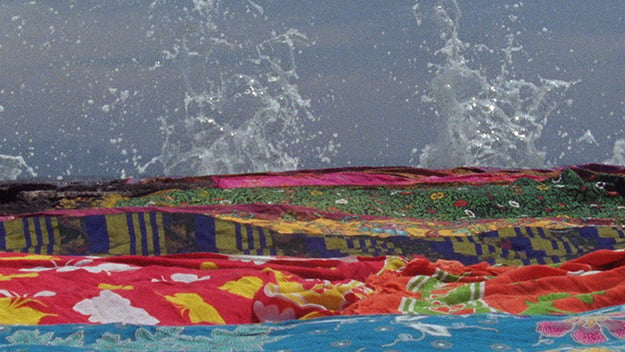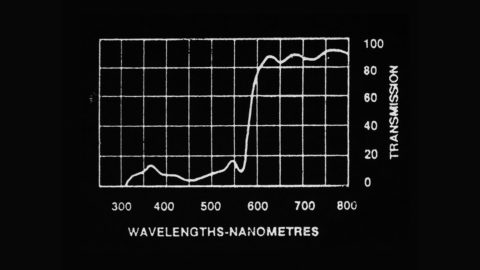The Decade in Experimental Film

The Grand Bizarre (Jodie Mack, 2019)
In 2009, James Benning premiered Ruhr, his first digital feature following nearly 40 years of work produced entirely on 16mm. Coming as it did at the tail end of the Aughts, after two-plus decades of hand-wringing over the slow proliferation of analog and then digital video formats in the world of experimental filmmaking, Ruhr seemed to mark the tipping point for the technology’s wider acceptance. After all, if Benning could embrace digital, why couldn’t we?
If the film versus video debate seems quaint in 2019, it’s not because Ruhr or any other film ushered us into a brave new world where all we’re exposed to is illuminated pixels on a flat surface, but because, if anything, celluloid remains as significant a presence in the experimental film scene as its digital counterpart. The two have even become unlikely bedfellows. As critic and scholar Leo Goldsmith points out, a number of artists are finding productive ways to integrate the mediums. Citing the work of Deborah Stratman and Ben Rivers, Goldsmith tells me that these and other artists are increasingly approaching film and video as “options to be toggled between or blended intermedially,” resulting in uncanny aesthetic objects that play with notions of materiality in provocative fashion. The fact that you’re just as likely to see these works projected in a gallery as a cinema is but one reason the term “artists’ moving image” has been adopted in recent years to describe the film and video work being made in multiple contexts by filmmakers and visual artists of diverse creative and cultural backgrounds.
As Genevieve Yue pointed out in an astute 2015 article for Film Comment, the rise of artist-run film laboratories has been a key factor in maintaining celluloid’s presence in experimental filmmaking circles. “What in the early Nineties was limited to a handful of cooperatively owned, independent labs, mostly in France,” she wrote, “has grown into an international network of over 30.” Five years later, and these organizations—Brooklyn’s Mono No Aware, Paris’ L’Abominable, and Australia’s Nanolab, to name just a few—continue to not only make the option of working on film feasible for an entirely new generation of artists but, as Goldsmith notes, also offer filmmakers the resources to establish “a practice of working between or across mediums for strategic purposes.” Steve Polta, artistic director of the San Francisco Cinematheque and its annual Crossroads festival for experimental cinema, echoes these sentiments: “the post-historical, post-apocalyptic, community-centric, and non-individual vibe of these groups is really the biggest news of the decade.”

Ruhr (James Benning, 2009)
Indeed, these far-flung, grassroots organizations have contributed in part to an important decentralization of the experimental film community, and with it a growing propensity on the part of programmers to look to the margins for new voices. The list of names comprising Film Comment’s “Best of the Decade: Avant-Garde” poll from 2010 resembles an almost entirely different landscape to the one many of us might recognize today, one that’s been fostered not through decades of localized discourse but through connectivity, the democratization of technology, and larger sociological strides toward inclusivity. For Film at Lincoln Center’s Dennis Lim, who, alongside Aily Nash launched Projections in 2014 in the slot formerly occupied by NYFF’s Views from the Avant-Garde sidebar, “there hasn’t been a conscious decision [on our part] to move in any specific direction, but simply to expand our collective sense of what might constitute the vanguard.” And what that vanguard looks like in 2019 is strikingly eclectic and international in scope: Beatrice Gibson, Sky Hopinka, Akosua Adoma Owusu, Laida Lertxundi, Nicolas Rey, Dani and Sheilah ReStack, Laura Huertas Milan, and Kevin Jerome Everson—these are just some of the names offered to me by critics, curators, and other filmmakers when asked about the decade’s most notable moving image artists.
With this shift in complexion has come a shift in aesthetics. Nonfiction (or what one might call the creative consideration of reality) was the decade’s dominant mode, heralded by the rise of Harvard’s Sensory Ethnography Lab (SEL), a campus-based interdisciplinary center for anthropological media arts founded by sound artist Ernst Karel and filmmaker Lucien Castaing-Taylor. Although the lab first made inroads in the late 2000s, it wasn’t until 2012’s Leviathan, a sui generis feat of nautical ethnography by Castaing-Taylor and French filmmaker (and anthropologist) Véréna Paravel shot with GoPro cameras, that the SEL’s stylistic and conceptual innovations took hold in the broader cinematic consciousness. In the wake of Leviathan, traces of both that film’s radical conflation of direct cinema and abstract expressionism, and the observational gamesmanship of the SEL’s other major accomplishment of the decade, Stephanie Spray and Pacho Velez’s Manakamana (2013), could be found in any number of otherwise unrelated experimental and documentary-adjacent works.
Like artist-run labs and coops, the SEL has proven to be a vital incubator for young filmmakers with far-ranging creative and political interests, providing programmers with a deep well of fresh and engaged talent to discover. For American animator Jodie Mack (The Grand Bizarre), arguably the most exciting moving image artist to have come to prominence in the past ten years, these curatorial trends cut both ways. “On the one hand,” she says, “I’m thrilled that curators are looking at younger filmmakers from a wide range of backgrounds. On the other hand, ‘taste’ and the elite nature of experimental film is counterintuitive to the true societal development we seek. So there is still work to do.” Polta, too, has noticed (and is in fact quite critical of) an increasing curatorial interest in “journalistic and information-based work that is concerned with presenting information in clear and unambiguous terms,” a clear turn away from “the visionary, sensual, ecstatic ambitions and achievements of the avant-garde.”

Leviathan (Lucien Castaing-Taylor and Véréna Paravel, 2012)
As with most shifts in a largely institutionalized field, there are conflicting forces and attendant controversies to consider, only some of which are agenda-driven. According to Andréa Picard, who’s consistently struck an enviable balance between old and new trends as head of TIFF’s Wavelengths program, curation isn’t a solely ideological venture, but a practical one as well: “Spatial constraints, overall context, financial support,” she says. “These are factors that are often overlooked and affect programming in crucial ways.” One might note, by way of example, Picard’s ongoing dedication to experimental 3D cinema (and in particular the stereoscopic films of Blake Williams), a technology she’s able to accommodate in TIFF’s Bell Lightbox cinema but which many other theaters can’t support—a purely logistical issue that doesn’t even begin to allow for considerations of age, race, or gender. As such, it’s worth reiterating that what films get seen and by whom is a multifaceted matter. During his time as lead programmer of the Ann Arbor Film Festival, David Dinnell championed early films by many of the above-mentioned artists; his unceremonious exit from the organization in 2016 was one of the decade’s most contentious affairs, and further proof that bureaucracy cares not for matters of art or creativity.
But as the new supplants the old, it’s important to remain not only cognizant of these developments but to consider what they tell us about the medium’s conflicted and ever-pressing relationship with change. As the critic Michael Sicinski tells me: “Our tendency is to find our place in the dominant, discard the residual, and hold the emergent at arm’s length.” As for what the emergent might be, Sicinski points to the new visual frontiers being explored on short-form mobile video applications like TikTok and Snapchat, the latter of which provided the Swiss-American artist Christian Marclay with the hundreds of clips he used to assemble his new Sound Stories installation—as logical a source as any, with digital imagery enduring as our most universal currency. In other words, the potential playing field continues to level—or, as Mack so enthusiastically phrases it: “No one is a genius; everyone is a genius. Authorship is dead. Long live the community!”
Ten key moving image works, 2010-2019:
Autrement, la Molussie (Nicolas Rey, 2012)
Engram of Returning (Daïchi Saïto, 2015)
Episode of the Sea (Lonnie van Brummelen, Siebren de Haan & the inhabitants of Urk, 2014)
The Extravagant Shadows (David Gatten, 2012)
L. COHEN (James Benning, 2018)
Let Your Light Shine (Jodie Mack, 2013)
Leviathan (Lucien Castaing-Taylor and Véréna Paravel, 2012)
PROTOTYPE (Blake Williams, 2017)
The Realist (Scott Stark, 2013)
Slow Action (Ben Rivers, 2011)
Jordan Cronk is a critic and programmer based in Los Angeles. He runs Acropolis Cinema, a screening series for experimental and undistributed films, and is a member of the Los Angeles Film Critics Association.







